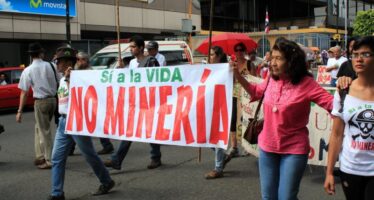Avc?’s shady connections, tortures documented in book
![]()
MUSTAFA EDIB YILMAZ
?STANBUL

Mehmet Baransu
An investigative journalist has exposed dozens of illegal acts committed by former Chief of Police Hanefi Avc? during his career and how he used a recently published book to misguide people over the reasons for his arrest.
Mehmet Baransu’s 447-page book “Mösyö: Hanefi Avc?’n?n Yazamad?klar?” (Monsieur: The Things Hanefi Avc? Couldn’t Write) landed on booksellers’ shelves only last week, but it has already created an immense impact on people’s understanding of one of the most heated topics in today’s Turkey: the allegations Avc? made in a book he wrote a month before he was arrested and the terrorism offenses he has been accused of. So far, the book has sold some 35,000 copies. Rasih Y?lmaz, editor-in-chief of the book’s publisher, Karakutu Publishing House, told Sunday’s Zaman there is an immense demand for the book, and that he expects it to sell 100,000 copies in a week, explaining, “Of 1,000 books published each year, only three or four books can achieve this.”
In the book, investigative journalist Baransu provides readers with official documents to prove the acts of torture Avc? committed in the early part of his career, the shady connections he later developed with the leftist terrorist organization Revolutionary Headquarters and the reason Avc? wrote a book, which was to avoid his expected arrest or to confuse people as to the motives of the police operation against him.
As Baransu notes in his book, the police launched a secret probe into the Revolutionary Headquarters more than a year before Avc? was arrested, on Sept. 28 of this year. Baransu says as the investigation deepened, Avc? felt personally insecure, fearing that he might also become a suspect and made a pre-emptive move by writing the book ‘Haliç’te Ya?ayan Simonlar: Dün Devlet, Bugün Cemaat’ (Simons on the Golden Horn), published in August. In that book, Avc? gave some clues about the leftist terrorist organization but also targeted the faith-based Gülen movement, alleging that the adherents of the movement are systematically joining the police. For Baransu, these two unrelated chapters came together in the same book only because “targeting the movement [through developing similar conspiracy theories] always pays off in Turkey,” in effort to misguide people into believing the movement’s adherents in the police arrested Avc? because he disclosed their growth strategy.
Avc? also tried to create confusion (and succeeded to a certain extent) by providing information about a terrorist organization, implying — how could he do this if he was a member. “It appears that Avc? — as he always did throughout his career — attempted to carry out a psychological operation here. In other words, he had the book published shortly before his arrest to link these two occurrences in people’s minds, as he was obviously aware of the investigation [into the Revolutionary Headquarters]. This is perhaps also the reason the chapter on the movement was hastily added to the book,” Baransu asserts in his recent work.
The Revolutionary Headquarters was an unknown terrorist organization to many until last year, when it clashed with the police in ?stanbul, and a key figure in the armed group, Orhan Y?lmazkaya, killed one police inspector and one civilian. He died in the clash, and the police found an immense munitions cache at his home. Later on, it was learned that he received training in Kurdistan Workers’ Party (PKK) military camps. Currently, the leftist group is broadcasting numerous photos and videos showing Y?lmazkaya during training, revealing the strong link between the two terrorist organizations. Police came to the conclusion that Avc? also had links to the Revolutionary Headquarters after detecting the controversial police chief’s strong connection to Necdet K?l?ç, a key member in the leftist terrorist organization.
Torture mode of interrogation for Avc?
In his book, Avc? says, “Torture was the normal mode of interrogation till 1999 in Turkey.” The documents and eyewitness statements Baransu included in his book show that Avc? passionately adopted this method, particularly when he was working in the southern province of Mersin in the early 1980s. One of those torture cases Baransu narrates is related to the death of schoolteacher Ali Uygur, who was arrested on July 1, 1980, and later killed. According to an eyewitness “he was beaten to death while wearing a hood stuffed with a cat.” Despite the insistence of the victim’s family, the incident was never investigated because of the military coup of Sept. 12 of the same year. Baransu says Avc? is today also remembered in Mersin for threats he directed against other detainees interrogated later on. According to the allegation in the book, Avc? showed Uygur’s bloody shoes to detainees and said they would end up the same way if they did not talk.
Baransu revealed that Avc? was convicted for committing torture in 1984 at the 2nd Adana Martial Law Court and sentenced to one year in prison and removal from duty for three years. However, this court decision was overturned the following year by the 4th Chamber of the Military Supreme Court of Appeals. Another local court later acquitted Avc? simply because the three victims and the eyewitnesses were members of the same organization and were in the same prison after the 1980 coup. This decision completely ignored the health reports of the victims.
Related Articles
El Paso: the city hears the first battle cries in America’s explosive immigration debate
![]()
A wave of migrants entering the US from a Mexico bloodied by the drug war promises to be the most
Ambiente y Derechos Humanos: breve análisis de la opinión consultiva OC-23 de la Corte Interamericana de Derechos Humanos
![]()
El pasado 7 de febrero del 2018, la Corte Interamericana de Derechos Humanos dió a conocer su respuesta a la solicitud de opinión consultiva que le hiciera Colombia el 14 de marzo del 2016
Domestic violence increases at weekends
![]()
According to a report prepared by a subcommittee of the Parliamentary Commission on Equal Opportunity for Women and Men said




